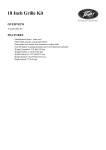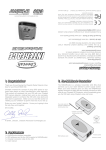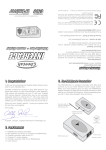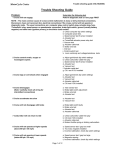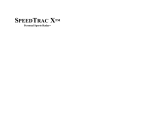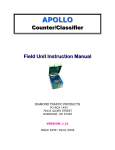Download Manual Transmission Service
Transcript
MyMopar.com MyMopar.com MyMopar.com The most common manual transmission complaint and at times the most elusive to track down, comes under the general heading of "noise in the transmission". More specific information is needed to help you pinpoint the trouble. What kind of a noise is it? When does it occur? How long has it been apparent? What are the owner's driving habits? You'll need the answers to these questions - and others as well-to help you isolate the cause of the complaint. In some cases, you may even find that the so-called transmission noise originates elsewhere in the drive train. Here are some general rules-of-thumb to guide you in diagnosing these problems. rent anti-rattle type washers at the control rod swivel. NOISES WITH CAR AT REST A rattling noise in neutral with the clutch engaged can be caused by a worn or misaligned drive pinion bearing. When installing the pinion bearing retainer, follow the instructions in your service manual for selectively fitting a gasket of the right thickness to eliminate all bearing end play. You'll find more on this subject in the "OVERHAUL TIPS" section of this reference book. · NOISES WITH CAR IN MOTION A high-pitched noise in neutral with the clutch disengaged usually indicates a faulty clutch release bearing. A chattering gear noise when the car is coast- A squealing noise with the transmission in ing in gear with the clutch disengaged is not abnormal and is no cause for concern. It does, however, indicate a poor driving habit on the owner's part-disengaging the clutch too soon and not using the engine to slow the car when coming to a stop. This chattering noise, sometimes also described as a rattle or flutter, may fade away after a while in a new car as the gears wear in. In warmer climates, this noise may be reduced by using SAE 90 gear lubricant. In cooler climates, however, you might create a hard shifting complaint by using this heavier lubricant. gear and the clutch pedal partially depressed indicates a tight or dry drive pinion pilot bush:ing in the end of the crankshaft. This noise may be particularly evident with a cold engine, and with the transmission in low gear or second gear. Check ·the clutch housing bore and face runout, as improper transmission alignment might be putting an excess load on the pilot bushing. Noise from the transmission just before stopping might be caused by a parking brake that is dragging or has an out-of-round drum. In any event, it's a good idea to be sure the parking brake is adjusted correctly and operating properly when tracking down most transmission complaints. A harsh metallic rattle upon acceleration in high MISCELLANEOUS NOISES Clashing gears, primarily a hard shifting problem, is a complaint covered in the following section under the heading, "DIAGNOSIS OF HARD SHIFTING". Other gear noises may .require removing and partially disassembling the transmission to inspect the gears for chipped or damaged teeth and loose spline fits. Also check for excessive end play clearances, particularly at the synchronizer and second-speed gear. gear within the 20- to 30-MPH range may originate not from the transmission, but from the clutch, if the clutch disc damper is not functioning properly. This noise may also appear upon deceleration, between SO- and 35MPH. It will sometimes be evident at lower speeds in second and low gears, too. A rattle in the gearshift linkage of earlier '61 cars may be eliminated by installing the cur- 0 MyMopar.com MyMopar.com MyMopar.com MyMopar.com MyMopar.com MyMopar.com MyMopar.com MyMopar.com MyMopar.com MyMopar.com MyMopar.com MyMopar.com MyMopar.com
















